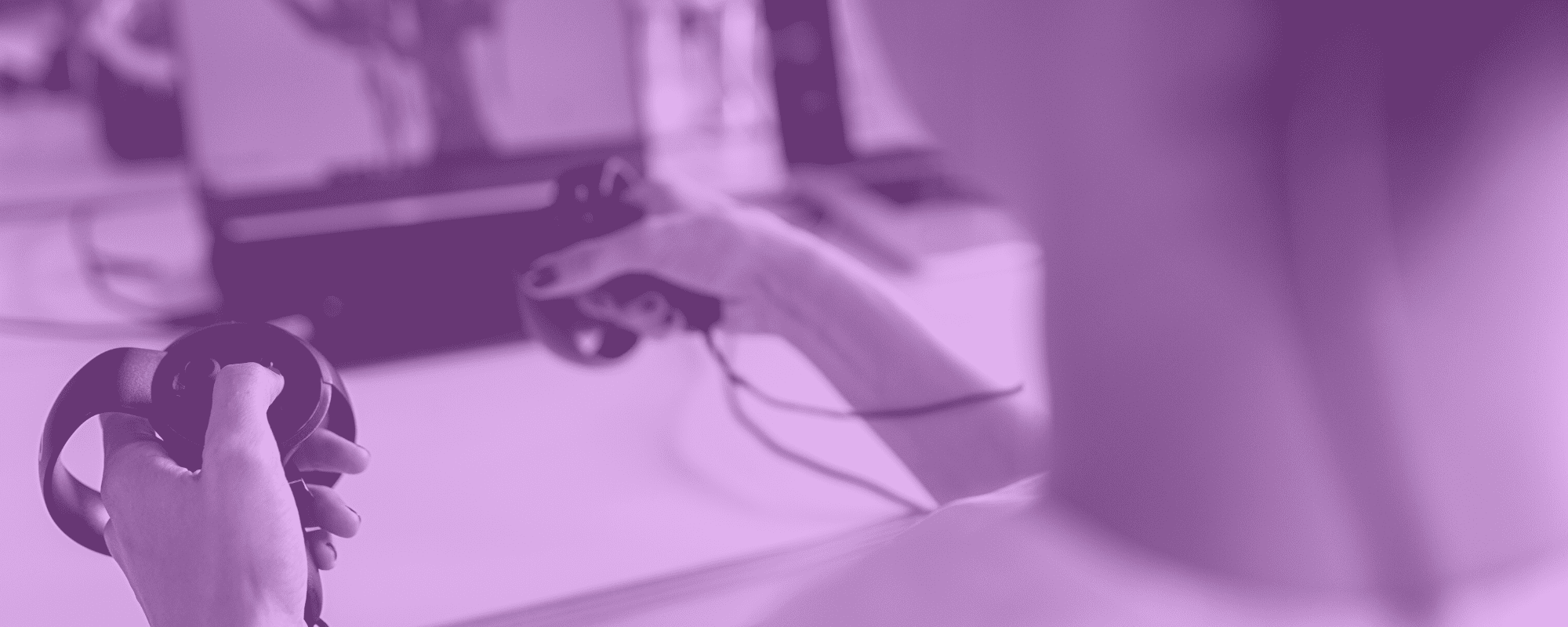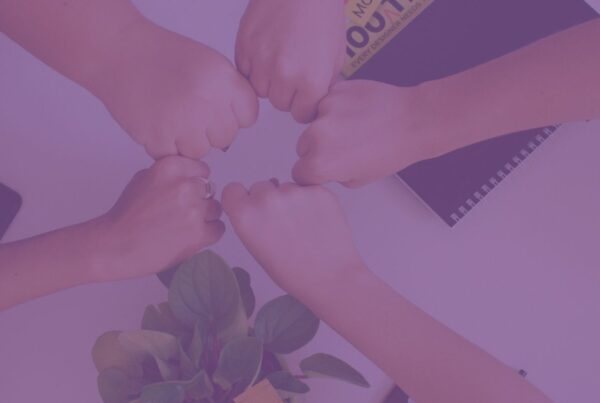This week we’re diving into the dozy topic of how to plan a virtual event. And we’re not strangers to futuristic events here at Endless! We’ve covered topics such as how to plan an event without visiting the venue, how Virtual Reality can impact the events industry, and much more. So today, we’re diving deeper. Because we figured it’s high time to actually get into tactical tips related to events that don’t adhere to the in-person model. And learn how to plan a successful virtual event that your attendees will never forget!
As per usual, our incredible hosts Brandt Krueger and Will Curran are here to guide the conversation. But our super special and iconic guest of the week is none other than Lori Pugh Marcum! And we’ve had the pleasure to welcome Lori on the show before. Only this time around, she’s the one who’ll be teaching us everything there is to know about planning a virtual event. So, are you ready to jump in the virtual bandwagon? Press play, it’s time to get iconic!

Planning A Virtual Event: How MPI Does It
Lori has been working with Meeting Professionals International for over five years now. So she has plenty to tell us about how they go about planning a virtual event! “So over the last, I would say three to four years, we have increased the number of webinars that we have”, she explains. “Live webinars in addition to the summits where we do three hours of education, we now teach the majority of all of our certificate sessions online. And those programs are sometimes six hours long, and I facilitate and teach most of those. So we’ve come a long way”.
“I would have to say it was a bit of a surprise that the numbers were really so good for our virtual events. And that’s for a multitude of different reasons. Whether they can’t afford the time out of the office, they want bite-sized one-hour education, something that they could listen to while they’re driving. So we’ve definitely seen a rise in people wanting to do more virtual events”, she adds.
The Beginnings
So how did MPI start with doing a virtual event? “I believe about six or seven years ago, the director of the MPI Academy started doing these”, Lori explains. “I would say not that often, maybe once a month. And we saw that our attendance numbers were really increasing. So we thought there’s a good 60% of our members that don’t go to our large signature events and we want to make sure that we’re providing education opportunities to all of our members. Regardless of whether they can come to an in-person event”.
“So, we really just started to add more. And then since we added what we call MPI Communities”, she adds. “Whether that’s independent small business owners, women, association planners, we’ve created these individual communities within the umbrella of MPI. Because NPI has 18,000 members and you feel like you’re having a customized educational networking experience. So it really ramped up for 2020, one to two webinars or live summits a week. In addition to our training courses and really trying to serve the needs of a lot of our niche audiences that we really can’t serve all of them at our live events”.
 The Planning Process For A Virtual Event
The Planning Process For A Virtual Event
The Timing
“We wanted to be very proactive about our 2020 schedule. So we actually set the days in advance for the whole year of when we would have different webinars or summits for our communities and our certificate deliveries”, says Lori. “And then we pick topics and kind of back-filled for there. What we found is that it really does us no good to source the speakers more than six months out because something will come up then they’re not able to do it. And so we just kind of put the topics out there as placeholders and then backfill”.
“But in terms of from the time that you set up the event, to finding the speaker, getting them to turn in the session worksheet details, getting it into the platform, it does take us more time. I would say it takes about two hours per speaker that you have. But in terms of a live event, there are so many other things that come into play with that. Having to set up AV, having to find a location. So in the grand scheme of things, it’s much easier to do a virtual event than an in-person event”.
Attendance & Cost
Will is curious to know how the levels of attendance changed, and what the costs associated with putting together a virtual event are. “I would have to say over the last two years, we’ve seen the number of participants increase”, says Lori. “When there’s what I call skin in the game, meaning they’re paying for content. People that are if they register, they’re going to show up, especially for our certificate courses. But for our summits and webinars that are free, we usually have about 50 to 55% of people show up. So for example, we may have 400 people registered for a summit and you may get about two to 25”.
When it comes to price, she explains that “our summits, which are a little bit bigger, have a platform price, a flat fee that we pay. But then there are our certificate courses, I just teach it on Zoom meetings. And so there really isn’t a cost. It’s just my time, which I have to say, in 2019, we added on some certificate deliveries to make up revenue that maybe we didn’t get in the first quarter. And this was a perfect way to do it because we could charge attendance for the classes and so it really helped us make up revenue in areas that we were lacking”.
Process Walkthrough
Speaking on the whole planning that comes along with a virtual event, Lori says that “once I identify a topic, I reach out to the speaker. If they’re available and interested, we send them what I call handy-dandy worksheet for them to fill out with all their information in the session details, bio headshot. And then I turn that over to an amazing colleague on my team, Bragan Sadler. And she will then make sure that it gets up on our website. She schedules rehearsals with the speakers two weeks in advance to check their audio, their internet, make any suggestions about the background, walk them through the features. So that takes about an hour. And then we just have the live event or summit. So our webinars actually are just an hour long. And then our summits typically are about three hours long”.
Planning comes into play with a virtual event as much as with an in-person event. “Everything from microphone level to internet capabilities, is it fuzzy? The lighting in the room? Even as simple as telling our webinar speakers, okay, you have to turn your camera on. And then they get very distracted by seeing themselves. And so they’re messing with their hair and worried about other things and they get off-topic. So yeah, rehearsals are important”.
Production Value
“Our speakers have fancy microphones. Most of them are industry, or what I call, experts on different topics. They may not necessarily be a professional speaker that does this thing all the time. So we really just kind of rehearse with them and give any suggestions on audio or whether they use earbuds like I am here. But outside of that, I would say 10% or less of our speakers truly have a really good microphone set up”.
Will wonders how the production value affects the success of a virtual event. Lori explains that “in my case, most of the time the speakers are delivering education that counts for continuing education credits. So it’s more about the content and the visual in the interactivity of the content that’s happening. Then perhaps the microphone, I’d say that’s first, but of course, we all know we will get what I call hijacked if the audio is off. We can’t think about what the speakers are actually talking about, we get distracted very easily. But for me, it’s more about the content and decent quality audio video and making sure their slides are appropriate”.
Live Vs Recording
An interesting topic that comes up is related to attendance, and how many people are present during the live event versus the ones that watch the recording. “We see it for our free virtual deliveries about a 50, 55% drop. Because keep in mind that people may put this on their calendar 30 days in advance and say, you know what? I’m going to listen to it at this time. And then we work in the meeting and events industry, which means something is bound to come up and happen. So it’s not something that I take personally, it says we all have busy schedules”.
“This is actually something I tell my speakers. Let’s just say even if it’s just a hundred people on your virtual event, but your recording is going to live on our website for five years. So there’s a possibility you could have thousands of people access it within a five year period. And so I actually encourage our speakers to use their own PowerPoint template with their contact information, their social media hashtags. And so it’s a continuous pipeline of people viewing it”.
Keeping People Engaged
Engagement is always an important point to consider when it comes to planning a virtual event. How can we ensure a virtual audience stays engaged? “It depends on the length”, says Lori. “So, we don’t have problems with our one-hour webinars because people are asked to type in questions in the chatbox. We have somebody on our team that moderates that and so, checks in the chatbox says, to the speaker, hey, we have a question. We have polls to engage people”.
“So I’m actually just working with another company called Pickles where I can have people draw a picture of how they’re feeling. Like draw a picture of how your day was and then they do it in their app and then it pops up on the screen and it’s just more interactive. Yes, in-person, face to face meetings are, I think, the most important. However, it would be a miss for us not to think about how we can make virtual events more engaging because it is now. It’s the now and we’ve got to get on board”.
How An MC Can Help
“So let’s say, for instance, you have a situation such as you have a live event and then you want to have a virtual audience as well. Having a consistent MC in the room, in the live education room who can talk to the speaker and say, hey, I’m representing our virtual audience. I’ll be taking questions from them and then when it comes to your Q and A time, I’ll ask those questions from them”.
“For instance, if it’s in between breaks, we have on our solely virtual event with nothing in person, Reagan from my team, moderates. So let’s say if we have three speakers for a summit, she introduces everyone. If there’s a sponsor, she’ll introduce the sponsor and then she’ll introduce the first speaker and then when that person is done or it’s Q and A, she’ll moderate and then she will introduce the next speaker as well. You want to add some life and some personality and some spunk to tie, especially if you have multi different sessions of content, to tie a thread all together throughout it all”.
 Diving Deeper Into Costs
Diving Deeper Into Costs
We already touched upon the costs associated with a virtual event, but this time around, Lori explains it further. “I know for us, usually we look around $2,500. For a platform that, as far as I know, I don’t want to say unlimited attendees, but close to it. Don’t always look for the cheapest cost. That doesn’t necessarily mean you’re going to get the best quality, so that’s something to keep in mind. And then, of course, it also comes down to how many events you’re doing. That gives you a leg to negotiate”.
“If it’s just one a year, that’s going to be a little different than if you’re dealing with, like radio where you’re doing two a week. There are some great companies out there. I’d say get three or four quotes and see what you’re looking at”.
Networking At A Virtual Event
“There is no virtual networking for me that is going to be as good as the in-person”, says Lori. “But that being said, there are ways for you to do kind of breakout chat room groups. You can also find different ways that you can encourage people to say where they’re from or what company or to idea share and really make them more of, what I would call, what’s the right word I’m looking for? Influencers if you will, on a topic. It’s not so much networking, it’s just leveraging their skills and part of your conversation”.
“I think because we’re in the people business, it is sometimes easy to discount and go too far the other way”, says Brandt. “And say that there’s no value to meeting online or something along those lines or that somehow that those relationships are less valuable than someone that you met in person. When in my humble experience, they can be just as powerful and just as significant even though they originally occurred online”.
“I think people, especially on social media and things like that, tend to be quite open to someone reaching out”, he adds. “Whereas, if I wanted to reach out to an industry person that I really respected and wanted to potentially work with or something along those lines, it’s very easy to do online these days. As opposed to free social media days and things like that. You would have to somehow be at that same conference, be in the same room, be able to go up to them and not feel like you’re an idiot. So I think that it opens the opportunities, but then you still need that live component to kind of seal the deal and really get to know people”.
General Strategies
We’ve covered a lot of specifics related to how to plan a virtual event. And Lori shares some excellent overall tips that will ensure success. “It depends on what your overall strategy is”, she says. “So I’ve actually used it as a marketing tool for our live event. For instance, one of our keynote speakers is for WEC is David Allison. So if I wanted to have him do a webinar as a teaser or say, hey, we’re going to have five of our WEC keynote speakers do teasers or intros leading up to it, we hope then people will want to learn more and then come to the event or we could give them special offers for those who participate. So it becomes a part of a much larger strategy”.
“It also gives me the opportunity to beta test speakers and topics. That way if I don’t want to take a risk on a speaker I’ve never heard before in a live in-person, then I could say, you know what? I’m going to kind of test drive this on a webinar and then go from there. And even topics. So for instance, if you want to stay really relevant and on top of the topic like coronavirus or crisis communications. Then this allows you to be a little bit more nimble with tying your brand to a cause or an awareness. It’s a lot easier to turn around and market a webinar a week, two weeks out, then you can deploy because you’re playing a live event”.
What Doesn’t Work So Well
“I would say coaching the speakers on how to engage with a visual audience. I have some good friends of mine who are speakers that don’t do virtual events because they don’t know how to not feed off of audience feedback. And so they get a little discouraged because they’re not getting automatic feedback, so that’s one. Two is we have some speakers who wanted not to share their cameras of them speaking and just go through the slides and that’s a snore-fest. Nobody wants to do that”.
“I think the third one is don’t plan too far out in advance. Three months is kind of that sweet spot. Don’t kill yourself trying to get speakers and exact content up, because it doesn’t really draw as many people to make it worth it. And I have to say, if you’re going to take a risk, this is the type of platform to do it on. Because you don’t have as many hard costs. And my performance isn’t directly tied at the end of the year by how so-and-so did on a webinar”.
Conclusions
And that’s a wrap on this exciting edition of #EventIcons! Packed full of amazing tips on how to put together an incredibly successful virtual event. Don’t be scared to go ahead and try it – you might be surprised by the results. So check out the amazing resources below to help you make this a reality, and join us again next week for more iconic conversations!










